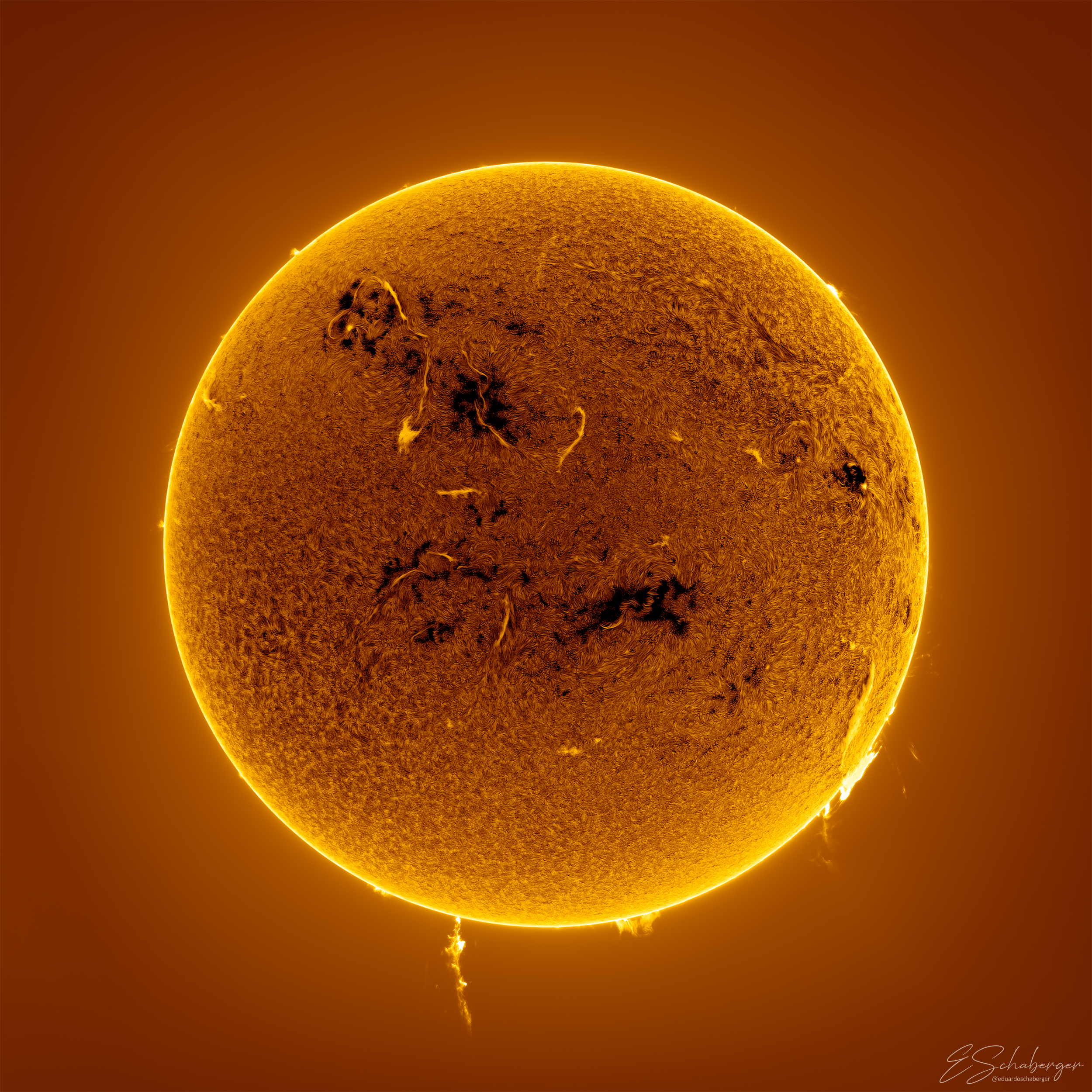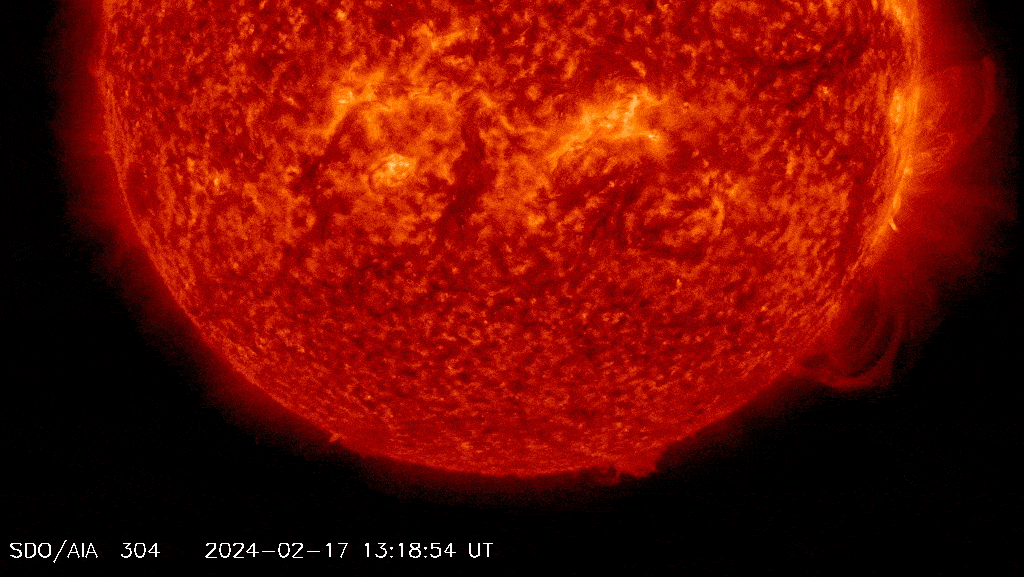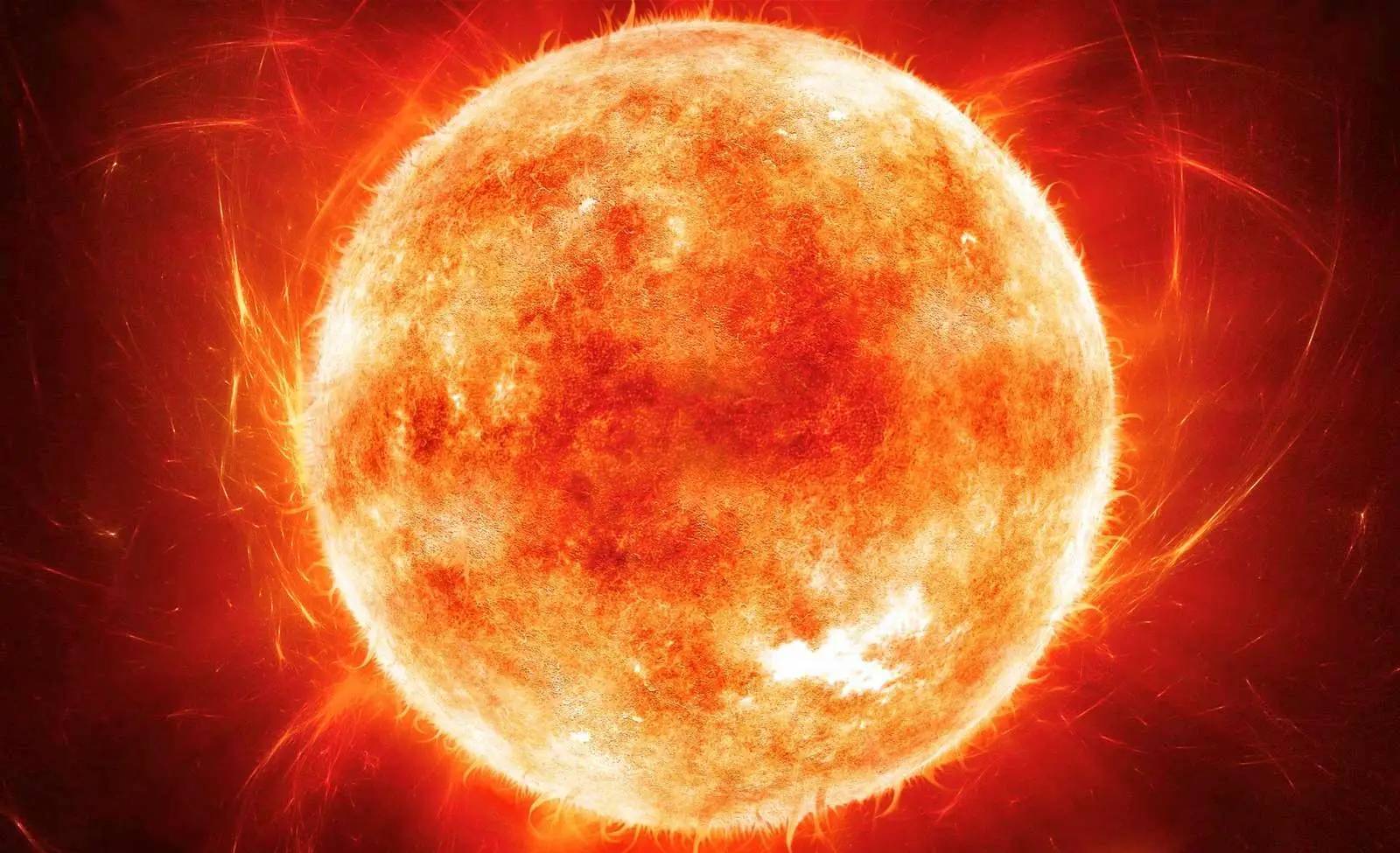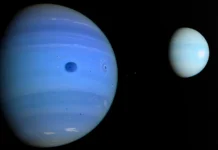In a rare event that defies traditional understanding of solar activity, astronomers and sky enthusiasts have witnessed a solar flare of gigantic proportions at the Sun's south pole. This extraordinary phenomenon, captured in remarkable detail by astrophotographer Eduardo Schaberger Poupeau on February 17, marks a crucial moment in the solar cycle, signaling the imminence of solar maximum.
The Sun, the center of our solar system, goes through approximately 11-year cycles of activity, culminating in periods of solar maximum, when solar flares and coronal mass ejections (CMEs) become more frequent and intense. However, flares at the solar poles are extremely unusual because the strong magnetic fields at the poles normally inhibit the formation of sunspots and associated flares.
The recent eruption projected a massive plume of plasma, extremely hot ionized gas, that stretched up to about 200.000 kilometers above the solar surface, equivalent to 15 times the height of Earth. This column of plasma later broke off, propelled into space as a gigantic cloud, a phenomenon known as a coronal mass ejection.
Eduardo Schaberger Poupeau, the astrophotographer who captured this remarkable moment, shared his impressions of the event with Spaceweather.com. "I had to rotate the camera to fit the huge plasma column in the photo. It was truly an amazing show," said Poupeau.
Very RARE Surprised Solar Eruption, which Reveals to Mankind

Specialists explain this unusual phenomenon by the presence of a polar corona filament (PCF), a magnetic structure that surrounds the Sun's magnetic poles. These structures become more apparent and active in the run-up to solar maximum, when solar activity in these regions shrinks and intensifies.
As we approach the peak of the solar cycle, unusual phenomena at the Sun's poles become more frequent. In February 2023, a plasma vortex raged around the Sun's north pole for eight hours, and in March, a plasma cascade created an impressive visual spectacle near the south pole. These events underscore the complex and still poorly understood dynamics of our Sun.

This increased and unusual activity is a clear sign that the Sun is approaching its most active phase, solar maximum, expected to peak in the coming months. While this period can lead to an increase in solar storms and the potential impact on Earth's communications and power grids, it also offers unique opportunities for studying solar phenomena and admiring awe-inspiring cosmic spectacles.
As researchers and sky enthusiasts look carefully to the Sun during this pivotal period, the flare at the south pole remains a reminder of the impressive power and mystery that characterizes our star.

















